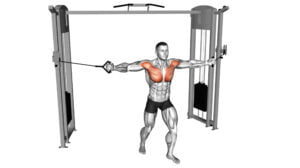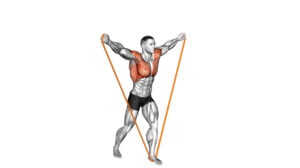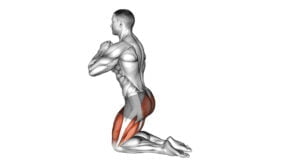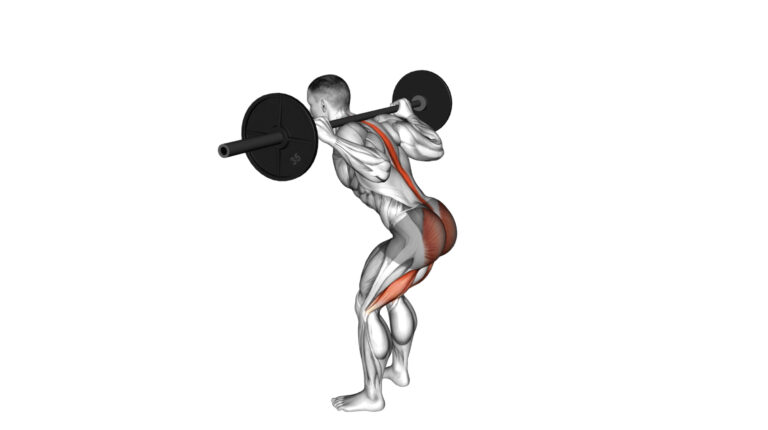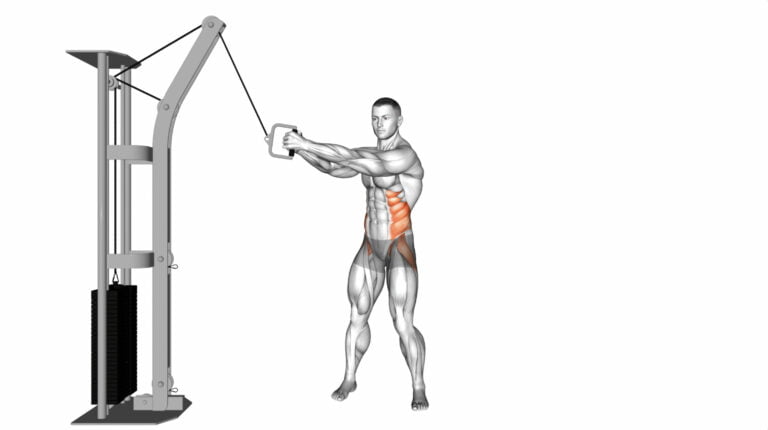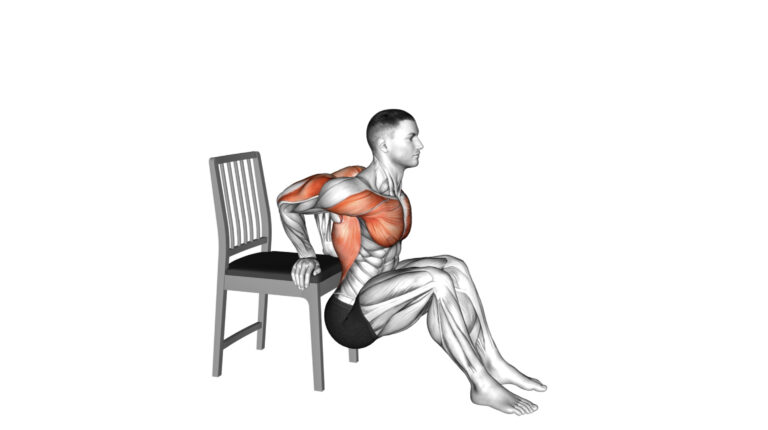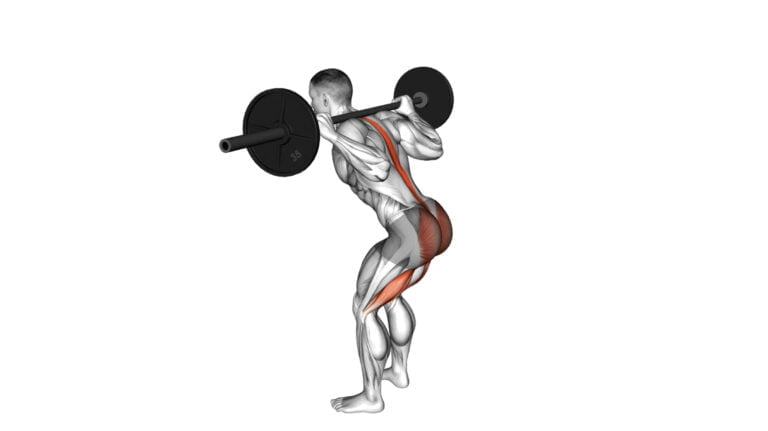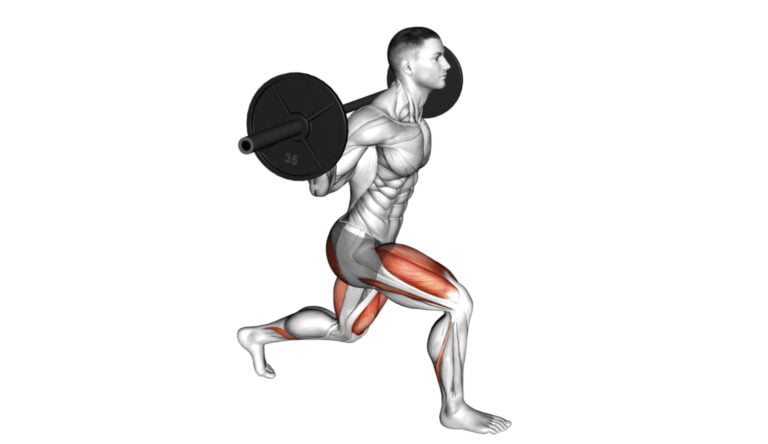6 Lower Back Exercises With Cable Machine For Strength And Stability
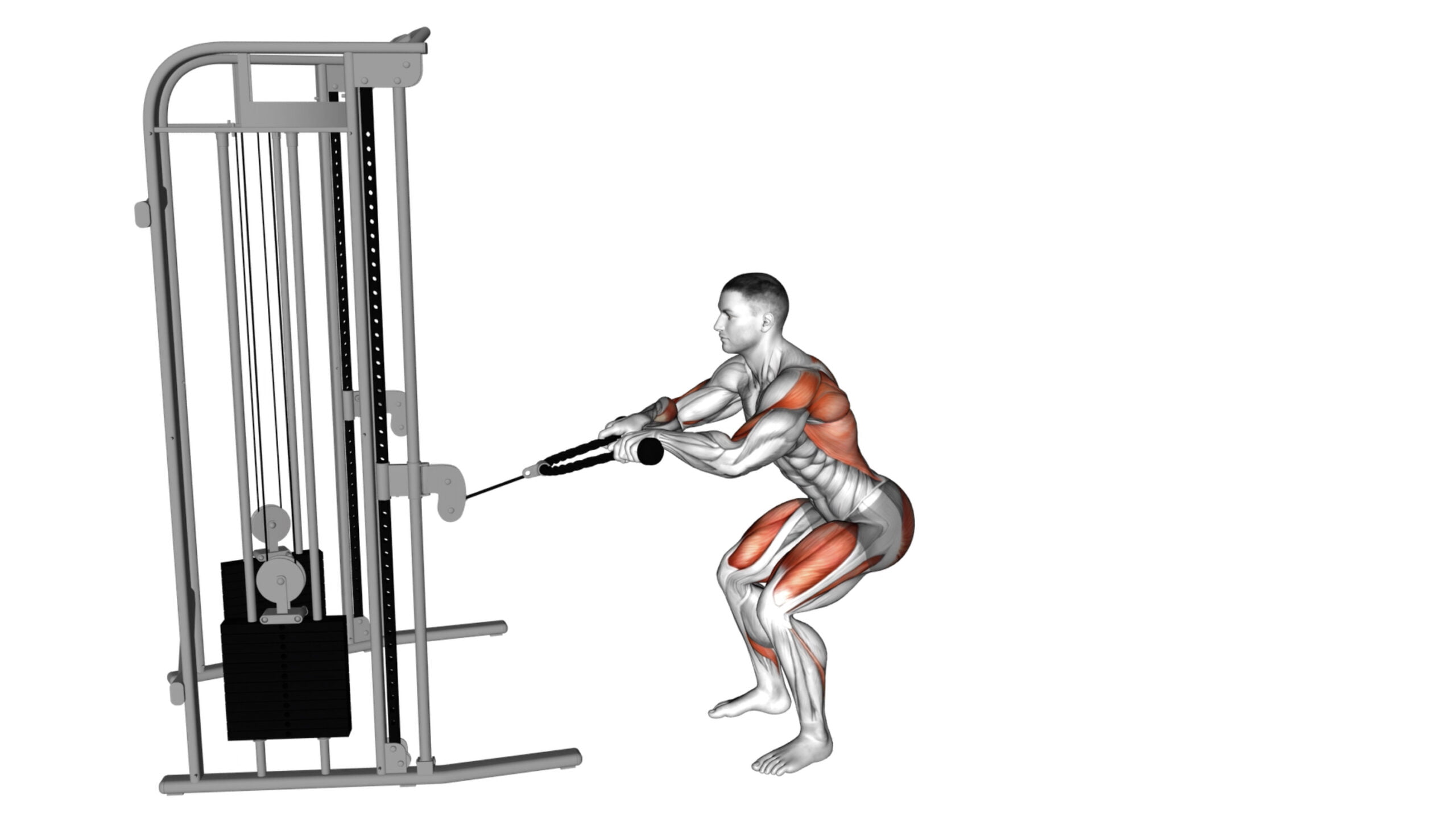
Strengthening the lower back is a crucial yet often overlooked aspect of a well-rounded fitness regimen. Despite its importance for everyday movements and athletic performance, many gym enthusiasts focus primarily on more visible muscle groups, neglecting this powerhouse of stability and support.
With over a decade of experience as a strength coach, I’ve seen firsthand how targeted lower back exercises with cable machines can revolutionize one’s approach to training, offering enhanced support and reducing the risk of injury.
The lower back serves as an integral bridge between upper body power and lower extremity function; it’s essentially the cornerstone of your body’s structural integrity. Lower Back Exercises with Cable Machines are not just about building muscle—they’re about cultivating resilience in your core that radiates confidence in every motion you make.

Keep reading to unlock functional strength and spinal stability like never before—your health will thank you for it! Discover why these six dynamic moves matter.
Key Takeaways
- Strengthening your lower back with cable machine exercises is crucial for core stability, better posture, injury prevention, and improved athletic performance.
- The lower back region comprises a complex system including muscles like the erector spinae and the quadratus lumborum, which are essential for everyday movements as well as heavy lifting.
- Exercises such as Cable Rope Crossover Seated Row, Cable Squat Row, Cable Pull Throughs (standing and kneeling), and Cable Deadlifts target the lower back effectively when performed with correct form and controlled movement.
- To gain the most benefit from these exercises, focus on engaging your lower back muscles throughout each movement; adjust the cable height and attachments to fit your body; maintain proper form; start with lighter weights to ensure safety; aim for 3-4 sets of 8-12 reps during workouts.
- Including a variety of other exercises in your routine ensures balanced muscle development. Training your lower back 2-3 times per week allows for sufficient recovery time between sessions for muscle growth.
The Importance of Lower Back Exercises with Cable Machine

Training your lower back muscles with cable machine exercises is essential for building a strong and stable core. These exercises help improve posture, reduce the risk of injury, and enhance overall strength and stability in the lower back region.
Benefits of Strong Lower Back Muscles
Having strong lower back muscles can drastically improve your overall well-being and athletic performance. A robust lower back enhances stability and balance, making everyday movements like lifting heavy objects, twisting, or even just standing for extended periods much easier.
This muscular foundation helps in reducing the risk of injuries by supporting the spine and contributing to a better posture.
Developing power in your lower back can also lead to increased strength gains in other exercises such as squats and deadlifts. The erector spinae become more capable of handling heavier weights which amplifies muscle growth throughout your entire body.
With a solid lower back, you’ll experience less discomfort, particularly if you’re someone who struggles with chronic back pain. Engaging this group of muscles aids in creating an internal brace for your core, safeguarding against strains that often result from improper form or weak support structures.
Lower Back Anatomy
Understanding the anatomy of your lower back is crucial to enhancing strength and preventing injuries. Your lower back houses a complex structure of muscles, ligaments, tendons, disks, and bones – all working together to support your body and enable movement.
At the core are the vertebrae which make up your spine; these bony segments encase and protect delicate spinal cord nerves.
The key players in this area include the large ‘erector spinae’ muscle group that helps keep you upright, as well as smaller yet significant stabilizers like the ‘quadratus lumborum‘.
Connecting it all are tough bands called ligaments that maintain alignment while allowing flexibility. Essential for daily activities are also the gluteus maximus and hamstrings which anchor into your pelvis, offering further stability to our lower back region with each move we make.
This intricate network needs regular attention through exercises designed specifically for these areas to ensure they remain strong and resilient against everyday stresses or weightlifting challenges.
Why Train Your Lower Back?
Training your lower back is vital because it forms the core of your body’s strength and stability. Strong lower back muscles support good posture, enhance performance in a variety of sports, and help prevent injuries that can occur from daily activities.
A robust lower back allows for more powerful movements when executing exercises like deadlifts and squats. It also plays a critical role in maintaining spinal alignment, reducing the risk of chronic pain and discomfort.
Focusing on your lower back with targeted exercises helps to build up the supporting muscles around your spine. This not only improves overall back health but also aids in creating a balanced physique capable of handling heavy loads during workouts or weightlifting sessions.
By incorporating cable machine routines into your workout schedule, you target these crucial muscles effectively while enjoying the added benefits of improved flexibility and enhanced mobility throughout your hips and shoulders as well.
Strengthening this area is essential for anyone looking to optimize their physical fitness or simply move through life more comfortably.
6 Best Lower Back Exercises with Cable Machine

Strengthening the lower back with cable machine exercises is important for overall stability and strength. You can try out Cable Rope Crossover Seated Row, Cable Squat Row (with rope attachment), Cable Pull Through, Cable Kneeling Pull Through, Cable pull through, and Cable Deadlift to target this area effectively.
1. Cable Rope Crossover Seated Row
The Cable Rope Crossover Seated Row is an effective exercise for strengthening the muscles of the lower back. Sit on the bench facing the cable machine and cross the ropes in front of you. Grasp each rope handle, keeping your arms extended and your chest up.
- With a strong grip, pull the handles towards your sides, squeezing your shoulder blades together as you bring your elbows behind you.
- Hold for a moment to feel the contraction in your lower back muscles before slowly returning to the starting position.
- Keep your movements controlled, engaging your core for stability throughout the exercise.
- Ensure that your back remains straight and avoid any arching or rounding of the spine during the movement.
- Aim for a full range of motion, feeling the stretch in your lower back as you extend your arms forward again.
- Perform this exercise for the recommended number of sets and repetitions to develop strength and stability in your lower back muscles.
2. Cable Squat Row (with rope attachment)
The cable squat row with rope attachment is a powerful exercise for strengthening the lower back. Execute this exercise by following these steps:
- Attach a rope to the low pulley cable and stand facing the machine with your feet shoulder-width apart.
- Squat down, keeping your chest up and your back straight while holding the rope handles at arm’s length in front of you.
- Pull the rope towards your abdomen, leading with your elbows and squeezing your shoulder blades together at the top of the movement before slowly returning to the starting position.
- Aim for 3 sets of 10 – 12 reps with controlled movements and focus on engaging your lower back muscles throughout.
3. Cable Pull Through with Rope
Transitioning from the previous cable exercise, the Cable Squat Row, the Cable Pull Through is another effective lower back exercise with a cable machine. This movement targets the posterior chain and engages the glutes and hamstrings.
- Stand facing away from the cable machine with your feet shoulder – width apart and a slight bend in your knees.
- Attach the rope or handle to the low pulley and grasp it between your legs.
- Hinge at your hips, keeping your back straight, and push your hips back as you lower your torso toward the ground.
- Drive through your heels to extend your hips and return to a standing position, fully engaging your glutes at the top of the movement.
- Maintain control throughout the motion, focusing on using your lower back muscles to pull yourself upright.
4. Cable Kneeling Pull Through
Transitioning from the Cable Pull Through, the Cable Kneeling Pull Through is another effective lower back exercise that targets the posterior chain. This exercise helps in strengthening and stabilizing the lower back muscles while also engaging the glutes and hamstrings for overall functional strength.
- Begin by setting up a cable machine with a rope attachment at the lowest position.
- Kneel down a few feet away from the machine, facing away from it, with your body upright and knees placed directly under your hips.
- Grasp the rope with both hands and lean forward slightly, maintaining a straight back and neutral spine.
- Engage your core and drive your hips forward to extend your hips and stand up straight.
- Focus on squeezing your glutes at the top of the movement before slowly returning to the starting position.
- Keep tension on the cable throughout the entire range of motion to ensure constant resistance on your lower back muscles.
5. Cable pull through
The cable pull through is a dynamic exercise that targets the glutes and hamstrings while engaging the lower back for stability.
- Begin by attaching a rope to the low pulley and stand facing away from the machine, feet shoulder – width apart.
- Grab the rope between your legs, hinge at the hips, and maintain a slight bend in your knees.
- Keep your back flat as you push your hips forward, bringing your torso to an upright position. Squeeze your glutes at the top of the movement.
- Slowly return to the starting position by hinging at the hips and maintaining control throughout. Focus on engaging your lower back and core for stability.
- Avoid overarching or rounding of the lower back during the movement to prevent strain. Ensure smooth and controlled motions throughout each repetition.
6. Cable Deadlift
The cable deadlift is a fantastic exercise for targeting the lower back and hamstrings while also engaging the glutes and core muscles. This compound movement is excellent for building overall strength and stability in the lower body.
- Begin by standing with your feet shoulder – width apart, facing the cable machine.
- Position the cable attachment at a low setting and secure it to both ankles.
- Grab the handles or bar with an overhand grip, keeping your arms extended downward.
- Keep your back straight, chest up, and shoulders pulled back as you hinge at the hips and lower your torso toward the ground.
- Engage your glutes and hamstrings to pull yourself back up to a standing position, driving your hips forward as you rise.
- Ensure that you maintain control throughout the movement, avoiding any jerking or sudden movements that may strain your lower back.
- Focus on feeling the tension in your lower back, glutes, and hamstrings throughout each repetition.
Proper Technique and Tips for Lower Back Exercises with Cable Machine
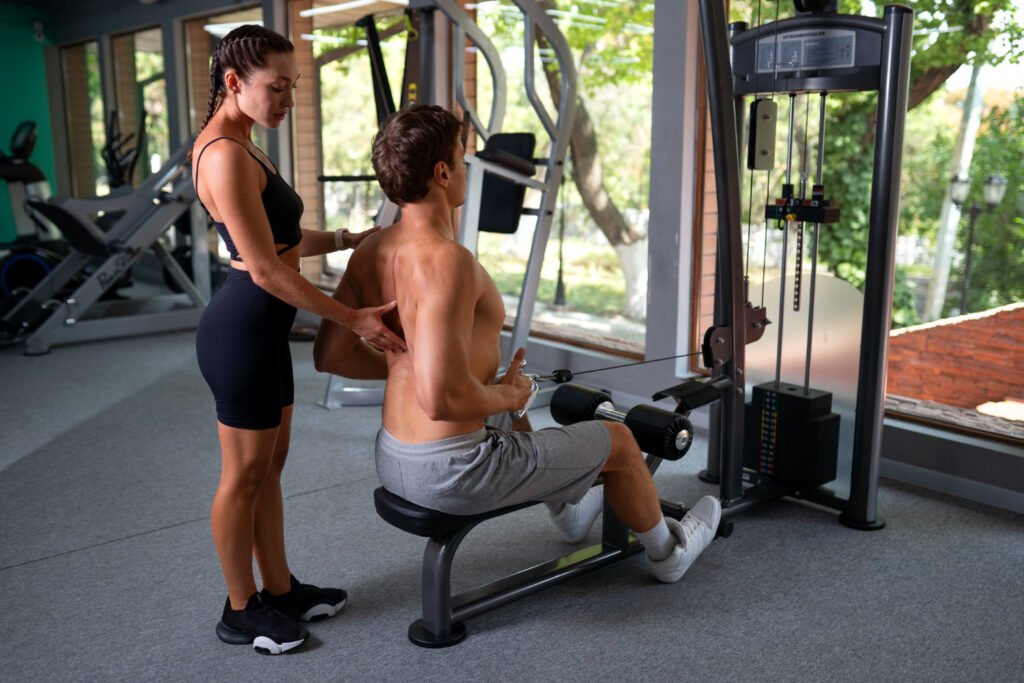
Proper technique is essential for lower back exercises with cable machine to prevent injury and maximize effectiveness. Read on to learn how to engage your lower back muscles effectively and safely.
Warm up and stretch before beginning
Before beginning your lower back exercises with a cable machine, make sure to warm up and stretch properly. This helps to prepare your muscles and reduce the risk of injury. Here are some ways to ensure a safe and effective warm-up routine:
- Start with 5 – 10 minutes of light cardio such as walking, cycling, or jumping jacks to increase blood flow and loosen up your muscles.
- Incorporate dynamic stretches like leg swings, hip circles, and side bends to further warm up the muscles in your lower back, hips, and glutes.
- Perform specific lower back stretches like child’s pose, cat-cow stretch, and seated spinal twist to target the muscles that you will be working during your cable machine exercises.
Maintain proper form and control the weight
To maintain proper form and control the weight:
- Begin with a neutral spine position, keeping your back straight and shoulders pulled back.
- Engage your core muscles to stabilize your torso throughout the exercise.
- Control the movement by using a slow and deliberate tempo, both during the concentric and eccentric phases.
- Avoid arching or rounding your lower back, which could lead to injury.
- Focus on initiating the movement from your lower back muscles rather than relying solely on momentum.
- Use an appropriate weight that allows you to perform each repetition with proper form and without straining.

Adjust the cable height and attachment as needed
Adjusting the cable height and attachment is crucial to ensure proper form and target the lower back effectively. Here are the steps to do so:
- Begin by setting the cable pulley at a height that aligns with your lower back.
- Choose the appropriate attachment for the exercise you will be performing, such as a rope or bar handle.
- Make sure that the attachment is securely connected to the cable machine.
- Double – check that the weight stack is at a suitable resistance level for your current strength.
- Prioritize comfort and stability, ensuring that all equipment is properly adjusted before starting your workout.
Focus on engaging the lower back muscles
Engaging the lower back muscles is crucial for building strength and stability. It helps to support the spine and maintain proper posture, reducing the risk of injury or strain. Here are some exercises that specifically target the lower back muscles with a cable machine:
- Cable Rope Crossover Seated Row: This exercise engages the lower back as you pull the cable towards your torso, focusing on squeezing your shoulder blades together at the end of each repetition.
- Cable Squat Row (with rope attachment): By performing a squat while pulling the cable towards you, you engage both the lower back and legs for a compound movement.
- Cable Pull Through: This exercise involves hinging at the hips while using a cable machine, activating the lower back as you extend your hips and bring the cable through your legs.
- Cable Kneeling Pull Through: Similar to the regular pull through, this variation is performed from a kneeling position to isolate and engage the lower back muscles even more effectively.
- Cable Deadlift: Using a low pulley attachment, this exercise mimics a traditional deadlift motion but with added resistance from the cable machine, targeting the lower back along with other muscle groups.
- Cable Romanian Deadlift: Focusing on hip hinge movement, this exercise activates both hamstrings and lower back muscles simultaneously for improved posterior chain strength.
Sample Workout Routine for Lower Back with Cable Machine
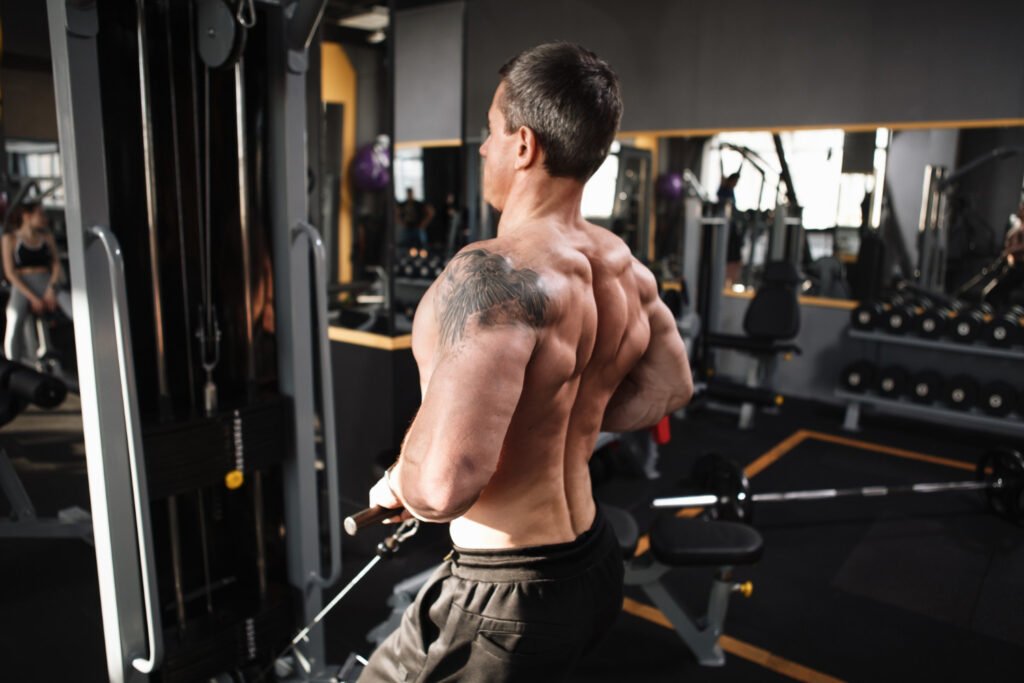
Incorporate the 6 lower back exercises with cable machine into a well-rounded workout routine, aiming for 3-4 sets of 8-12 reps for each exercise. For optimal results, consider training your lower back muscles 2-3 times per week and incorporating other complementary exercises to target different muscle groups.
Recommendations for sets and reps
For each exercise, aim to complete 3-4 sets of 8-12 repetitions to build strength and endurance in your lower back muscles. Start with a weight that challenges you without sacrificing proper form, and gradually increase as your strength improves.
Rest for about 60-90 seconds between sets to allow for recovery while keeping the intensity high.
When incorporating other exercises into your routine, consider including complementary movements such as lat pulldowns or barbell rows to enhance overall back development. Aim for a balanced approach by training the lower back 1-2 times per week with sufficient rest between sessions to promote recovery and muscle growth.
Incorporating other exercises for a well-rounded routine
For a well-rounded routine, consider incorporating other exercises that target complementary muscle groups, such as the latissimus dorsi, trapezius muscles, and abdominals. Including compound exercises like barbell rows or pull-ups will engage multiple muscle groups simultaneously for overall strength and stability.
Additionally, integrating isolation exercises like chest flys and rear delt raises can help to address specific weaknesses or imbalances in the upper body. By diversifying your workout routine with a variety of movements, you can achieve balanced muscle development and reduce the risk of overuse injuries.
To further enhance your lower back strength and stability, adding resistance training for the hamstring muscles can provide valuable support to this area. Exercises like sumo deadlifts or leg curls target these key muscles while contributing to overall lower body strength.
Furthermore, including core-focused workouts such as planks or Russian twists can improve intra-abdominal pressure control and spinal stabilization – crucial components for a strong lower back.
How often to train and what training split to follow
Incorporating other exercises for a well-rounded routine can enhance the overall effectiveness of your lower back workout. When it comes to training frequency, aiming for 2-3 sessions per week can be beneficial for building strength and stability in the lower back muscles.
To achieve a balanced training split, consider incorporating a mix of compound movements and isolation exercises that target the lower back from various angles. This approach can help ensure comprehensive development while allowing for adequate recovery between sessions.
Conclusion

In conclusion, mastering these lower back exercises with a cable machine can significantly enhance your strength and stability. The practicality and efficiency of these exercises make them easy to incorporate into your workout routine.
Will you commit to incorporating these exercises into your fitness regimen? Emphasize the importance of this focus, as it can lead to significant improvements in overall physical well-being.
As you embark on this journey, remember that consistency is key to achieving long-term benefits. Let’s take action toward building a stronger and more stable lower back together!
FAQs
1. Can cable machines target lower back muscles effectively?
Absolutely, cable machines offer a versatile workout that can strengthen the lower back by targeting key muscles like the rectus abdominis and transverse abdominis for core stability.
2. What are some exercises to relieve lower back pain using a cable machine?
For easing lower back pain, you can perform exercises such as standing low-back extensions or seated rows which focus on strengthening your lumbar region and supporting structures.
3. How do I ensure my form is correct when doing cable machine exercises for my lower back?
Maintain a controlled movement with each exercise, keeping your abs tight and focusing on moving through your hips while avoiding excessive arching of your spine to protect against strain.
4. Is it safe to use heavy weights on the cable machine for these exercises?
Start with lighter weights to master technique first; then gradually increase resistance as your strength improves, ensuring safety and effectiveness in building stability in the shoulder joints and teres major muscle.
5. Do these exercises only work the lower back or other areas too?
While primarily targeting the lower back, these exercises also engage important surrounding muscle groups including lats, triceps, pecs, rotator cuff muscles adding overall upper-body conditioning.
6. How often should I include these cable machine workouts into my routine for optimal results?
Incorporate this routine two to three times per week allowing adequate rest between sessions will help promote strength & conditioning gains while preventing overworking muscles for balanced development.

Author
Years ago, the spark of my life’s passion ignited in my mind the moment I stepped into the local gym for the first time. The inaugural bead of perspiration, the initial endeavor, the very first surge of endorphins, and a sense of pride that washed over me post-workout marked the beginning of my deep-seated interest in strength sports, fitness, and sports nutrition. This very curiosity blossomed rapidly into a profound fascination, propelling me to earn a Master’s degree in Physical Education from the Academy of Physical Education in Krakow, followed by a Sports Manager diploma from the Jagiellonian University. My journey of growth led me to gain more specialized qualifications, such as being a certified personal trainer with a focus on sports dietetics, a lifeguard, and an instructor for wellness and corrective gymnastics. Theoretical knowledge paired seamlessly with practical experience, reinforcing my belief that the transformation of individuals under my guidance was also a reflection of my personal growth. This belief holds true even today. Each day, I strive to push the boundaries and explore new realms. These realms gently elevate me to greater heights. The unique combination of passion for my field and the continuous quest for growth fuels my drive to break new ground.

